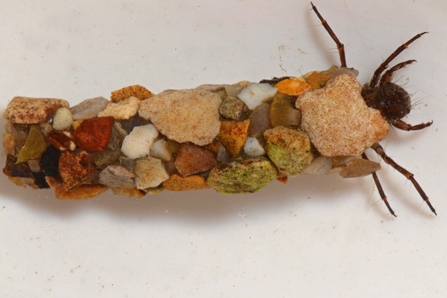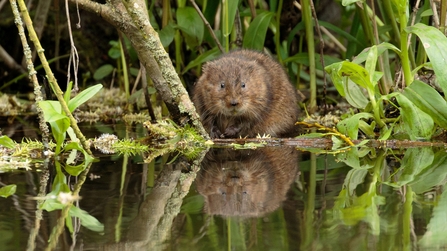We are particularly blessed with rare chalk rivers in our area, and, as we celebrate World Rivers Day on 22 September, this month’s 'What to See' explores a few of the wildlife species that call this precious habitat home.
The evergreen, aquatic plant Watercress grows in thick drifts in clear, fast-flowing, shallow streams. It is an indicator of a healthy river, as it cannot grow in polluted waters. The plant’s leaves float on the surface of the water and it can grow up to 60cm in height. It can be seen year-round, with its white-and-green flowers appearing in clusters between May and October. In the 18th century, Watercress became a popular food ingredient, which led to it being cultivated on a commercial scale, something which continues to this day. Its leaves are a good source of vitamin C and it is also used in a number of medicines.

Cased Caddisfly larva © David Johnson
Within the crystal clear waters, as well as fish, you can find the larvae of caddisflies. These larvae create protective cases that they live in, formed of materials such as stones, sand, leaves and twigs, combined with their own silk. After pupating, they become moth-like adults with hairy wings, who are found on vegetation close to the water’s edge, or flying in swarms over the river. The adults are an important food source for various predators, including Brown Trout and Dippers. There are over 200 species of caddisfly in the UK, and they are also known as sedge flies.
Alder © Philip Precey
Growing up to 20 metres in height, the Common Alder tree is often found along riversides. Its exposed roots shelter fish from high flows and predators. The tree’s rounded leaves provide food for invertebrates such as water beetles, stoneflies and the larvae of caddisflies. As the Alder does not rot underwater, its wood has been used to shore up riverbanks and canals. The wood was also used to make charcoal. The Alder bears both male and female flowers: long, yellow-brown catkins and small red cones, the latter of which harden and ripen when pollinated.

Water Vole (c) Michael Talbot
We couldn’t talk about chalk stream species without mentioning the Water Vole! Looking similar to the Brown Rat, but with small ears, a furry tail and a blunt nose, it is 14–22cm in length, burrows in the riverbank, and nibbles grass and stems by the water’s edge. Water Voles live up to 1.5 years on average, and have up to four litters a year of up to five young. The Water Vole is a priority species and an indicator of the health of a river’s ecosystem, and so the Trust has been successfully reintroducing them to our chalk streams over the years.
For more information on chalk rivers click here and for five suggested chalk stream walks in the area, read our guide here. Here’s a River Bird Spotter Guide to help you ID the birds you might see along the river, and a Freshwater Fish Spotter Guide in case you’re eagle-eyed enough to see the fish swimming in the water!
If you can’t get out, you can still ‘Immerse Yourself in our Chalk Streams’ with this wonderful blog by Melanie Woods.

